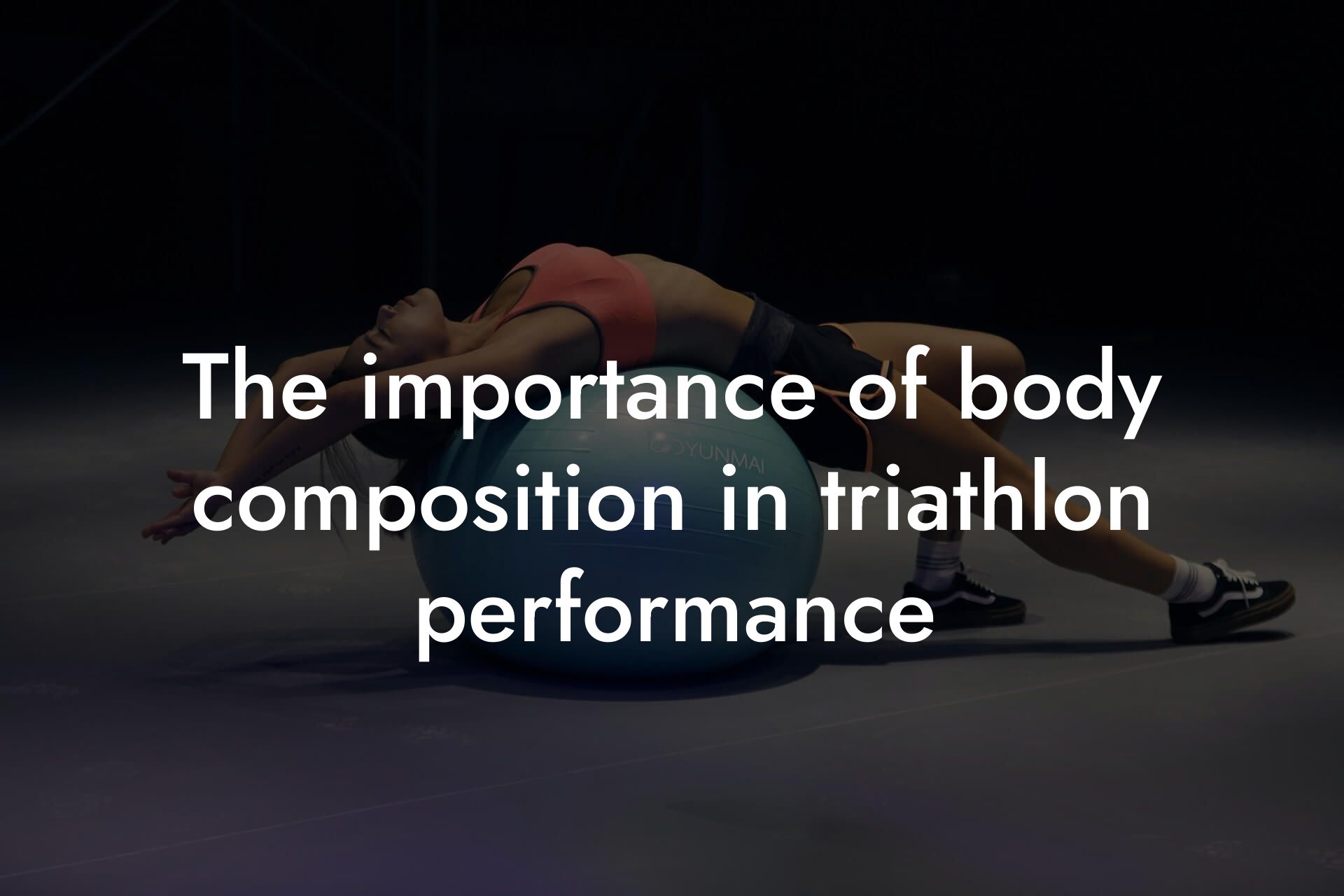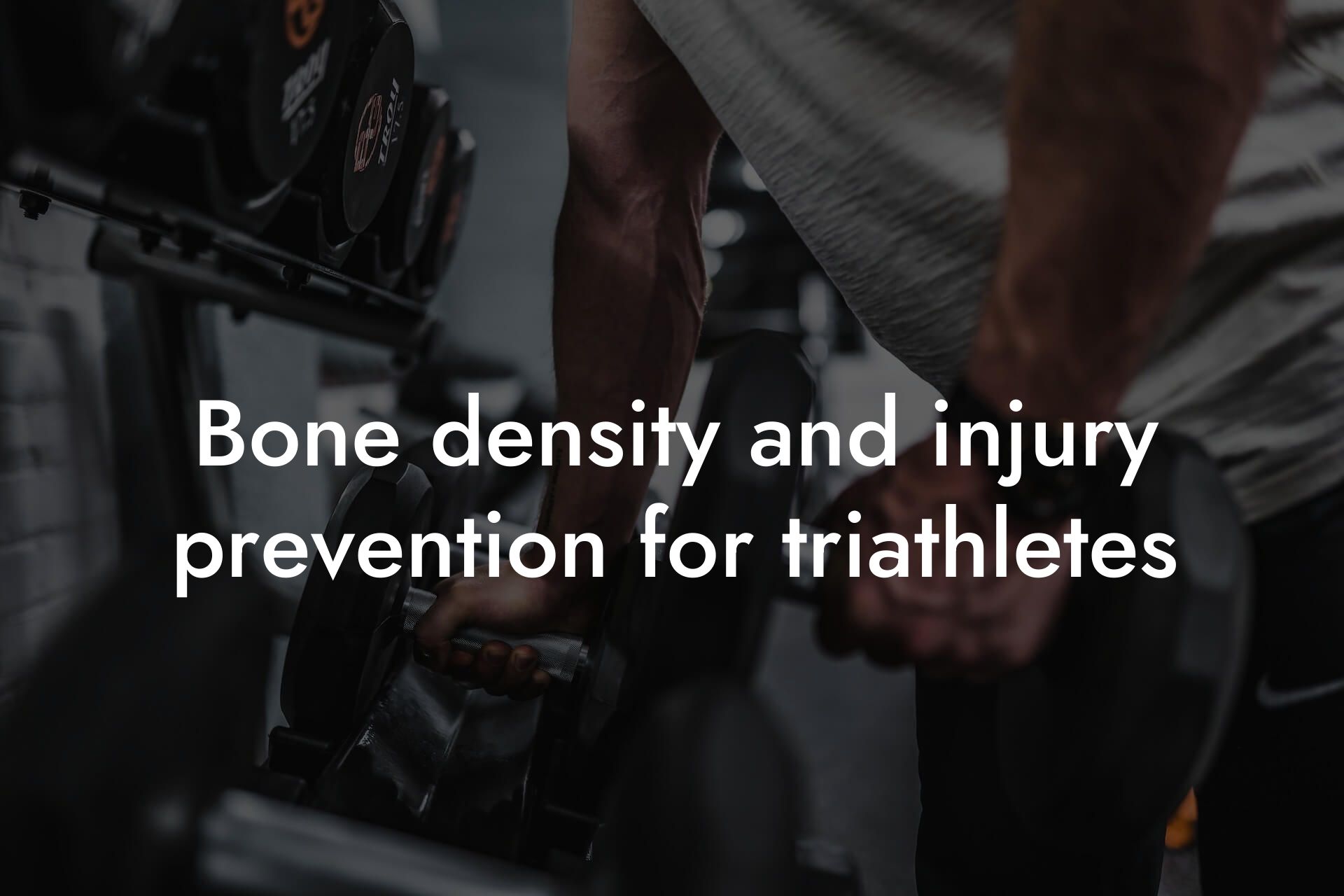As a triathlete, you know that the grueling demands of your sport can take a toll on your body. The combination of swimming, biking, and running can leave you feeling exhausted, both physically and mentally. However, it's not just the race itself that's challenging – it's also the recovery process that follows. In fact, recovery is just as crucial as training when it comes to achieving optimal performance. At Tano Performance Group, we understand the importance of recovery and want to provide you with the tools and techniques you need to bounce back stronger and faster.
Table of Contents
The Phases of Recovery
Recovery is a multi-phase process that begins immediately after your race. There are three main phases to focus on: immediate recovery, short-term recovery, and long-term recovery. Immediate recovery occurs in the first 30-60 minutes after your race and involves replenishing energy stores, rehydrating, and reducing muscle soreness. Short-term recovery takes place over the next 24-48 hours and focuses on repairing muscle damage, reducing inflammation, and promoting relaxation. Long-term recovery occurs over several days or weeks and involves rebuilding muscle strength, endurance, and overall fitness.
Immediate Recovery Techniques
During the immediate recovery phase, it's essential to focus on replenishing energy stores, rehydrating, and reducing muscle soreness. Here are some techniques to try:
- Refuel with carbohydrates and protein within 30-60 minutes of your race to replenish energy stores and support muscle repair.
- Rehydrate with water or a sports drink to replenish lost fluids and electrolytes.
- Use compression garments, such as tights or sleeves, to improve blood flow and reduce muscle soreness.
- Engage in light stretching or foam rolling to promote relaxation and reduce muscle tension.
Short-Term Recovery Techniques
During the short-term recovery phase, focus on repairing muscle damage, reducing inflammation, and promoting relaxation. Here are some techniques to try:
- Engage in light, low-intensity exercise, such as cycling or swimming, to promote blood flow and aid in the removal of waste products.
- Use cryotherapy, such as ice baths or cold compresses, to reduce inflammation and muscle soreness.
- Practice gentle stretching or yoga to promote relaxation and reduce muscle tension.
- Get plenty of rest and aim for 7-9 hours of sleep per night to aid in muscle repair and recovery.
Long-Term Recovery Techniques
During the long-term recovery phase, focus on rebuilding muscle strength, endurance, and overall fitness. Here are some techniques to try:
- Gradually increase your training intensity and volume over time to rebuild muscle strength and endurance.
- Incorporate strength training exercises to target specific muscle groups and improve overall fitness.
- Focus on active recovery techniques, such as cycling or swimming, to promote blood flow and aid in the removal of waste products.
- Make time for rest and relaxation, and prioritize self-care activities, such as meditation or reading, to reduce stress and promote overall well-being.
The Role of Nutrition in Recovery
Nutrition plays a critical role in the recovery process, particularly during the immediate and short-term recovery phases. Focus on consuming a balanced diet that includes:
- Carbohydrates: Focus on complex carbohydrates, such as whole grains, fruits, and vegetables, to replenish energy stores.
- Protein: Consume lean protein sources, such as chicken, fish, or eggs, to support muscle repair and recovery.
- Healthy Fats: Include sources of healthy fats, such as nuts, seeds, and avocados, to support hormone production and overall health.
- Hydration: Drink plenty of water or sports drinks to replenish lost fluids and electrolytes.
The Benefits of DEXA Scans for Triathletes
At Tano Performance Group, we understand the importance of tracking your progress and monitoring your body composition. That's why we recommend using DEXA scans as part of your recovery strategy. DEXA scans provide a comprehensive body assessment, including measurements of body fat, bone density, and lean mass. This information can help you:
- Identify areas for improvement and track changes over time.
- Optimize your nutrition and training plan to support your goals.
- Monitor your risk for injury and take proactive steps to prevent it.
- Gain a competitive edge by fine-tuning your body composition and performance.
Recovery is a critical component of any triathlete's training program. By incorporating the techniques outlined above, you can optimize your recovery, improve your performance, and reduce your risk for injury. Remember to prioritize nutrition, hydration, and rest, and don't be afraid to seek out professional guidance and support. At Tano Performance Group, we're committed to helping you achieve your goals and take your performance to the next level. Contact us today to learn more about our DEXA scan services and how they can support your recovery and training goals.
Frequently Asked Questions
What is the importance of recovery techniques for triathletes after races?
Recovery techniques are crucial for triathletes after races as they help to repair and rebuild the muscles, replenish energy stores, and reduce muscle soreness and inflammation. Proper recovery enables triathletes to return to training and competition sooner, and at a higher level of performance. It also reduces the risk of injury and illness, and improves overall physical and mental well-being.
What are the most common mistakes triathletes make when it comes to recovery after a race?
Common mistakes triathletes make when it comes to recovery after a race include not allowing enough time for recovery, not prioritizing nutrition and hydration, not incorporating stretching and foam rolling, and not getting enough sleep. These mistakes can lead to prolonged fatigue, decreased performance, and increased risk of injury.
How long does it take for a triathlete to fully recover after a race?
The time it takes for a triathlete to fully recover after a race depends on several factors, including the intensity and duration of the race, the individual's fitness level, and the effectiveness of their recovery techniques. Generally, it can take anywhere from a few days to several weeks for a triathlete to fully recover.
What are the best recovery techniques for triathletes after a race?
The best recovery techniques for triathletes after a race include active recovery (such as light swimming, cycling, or running), stretching and foam rolling, self-myofascial release, compression garments, ice baths, and nutrition and hydration strategies. These techniques help to reduce muscle soreness and inflammation, improve circulation, and replenish energy stores.
What is active recovery, and how does it help triathletes?
Active recovery refers to low-intensity exercise performed after a race or intense training session. It helps to promote blood flow, reduce muscle soreness, and speed up the removal of waste products. Examples of active recovery include light swimming, cycling, or running, as well as yoga or Pilates.
How does stretching and foam rolling help with recovery?
Stretching and foam rolling help to reduce muscle tension and improve circulation, which can help to reduce muscle soreness and inflammation. They also help to improve range of motion and reduce muscle imbalances, which can improve overall performance.
What is self-myofascial release, and how does it help with recovery?
Self-myofascial release refers to the use of tools such as lacrosse balls or rollers to release tension in the muscles and connective tissue. It helps to reduce muscle soreness and inflammation, improve circulation, and improve range of motion.
How do compression garments help with recovery?
Compression garments help to improve circulation, reduce muscle soreness and inflammation, and improve recovery by providing graduated compression that helps to push blood back towards the heart.
What are the benefits of ice baths for recovery?
Ice baths help to reduce muscle soreness and inflammation, improve circulation, and speed up the removal of waste products. They also help to reduce muscle spasms and improve recovery by constricting blood vessels and reducing inflammation.
What are the best nutrition and hydration strategies for recovery?
The best nutrition and hydration strategies for recovery include consuming a balanced meal or snack that includes carbohydrates and protein within 30-60 minutes after exercise, staying hydrated by drinking plenty of water or sports drinks, and consuming electrolyte-rich foods and drinks.
How important is sleep for recovery?
Sleep is crucial for recovery as it allows the body to repair and rebuild muscles, replenish energy stores, and adapt to the demands of exercise. Aim for 7-9 hours of sleep per night to aid in recovery.
What are some common signs of overreaching or overtraining?
Common signs of overreaching or overtraining include fatigue, decreased performance, increased resting heart rate, decreased appetite, and increased frequency of illness or injury. If you experience any of these symptoms, it may be a sign that you need to adjust your training and recovery strategies.
How can triathletes incorporate recovery techniques into their busy schedules?
Triathletes can incorporate recovery techniques into their busy schedules by prioritizing recovery, scheduling recovery sessions into their training plans, and finding quick and effective recovery techniques that can be done on-the-go.
What are some recovery techniques that can be done on-the-go?
Recovery techniques that can be done on-the-go include self-myofascial release using a lacrosse ball or roller, stretching, and foam rolling. These techniques can be done in a hotel room, at the office, or anywhere else.
How can triathletes prioritize recovery when they have limited time?
Triathletes can prioritize recovery when they have limited time by focusing on the most effective recovery techniques, such as active recovery, stretching, and foam rolling, and by scheduling recovery sessions into their training plans.
What are some common myths about recovery for triathletes?
Common myths about recovery for triathletes include the idea that recovery is only necessary for elite athletes, that recovery is a waste of time, and that recovery techniques are only necessary after a race. However, recovery is important for all triathletes, regardless of level or experience, and can be beneficial during training as well as after a race.
How can triathletes make recovery a habit?
Triathletes can make recovery a habit by incorporating recovery techniques into their daily routine, scheduling recovery sessions into their training plans, and finding a recovery buddy or accountability partner.
What are some recovery techniques that are specific to swimming, cycling, and running?
Recovery techniques that are specific to swimming, cycling, and running include using a swim bench or pool noodles for active recovery after swimming, using a stationary bike or spin class for active recovery after cycling, and using a treadmill or elliptical machine for active recovery after running.
How can triathletes use technology to aid in recovery?
Triathletes can use technology to aid in recovery by using wearable devices that track heart rate, sleep, and other metrics, by using apps that provide guided recovery sessions, and by using online resources and communities to connect with other athletes and learn new recovery techniques.
What are some common mistakes triathletes make when it comes to nutrition and hydration for recovery?
Common mistakes triathletes make when it comes to nutrition and hydration for recovery include not consuming enough carbohydrates and protein after exercise, not staying hydrated, and not consuming electrolyte-rich foods and drinks.
How can triathletes stay motivated to prioritize recovery?
Triathletes can stay motivated to prioritize recovery by setting recovery goals, finding a recovery buddy or accountability partner, and tracking progress and improvements in performance and overall health.
What are some recovery techniques that can be done with a partner or group?
Recovery techniques that can be done with a partner or group include active recovery sessions, stretching and foam rolling, and self-myofascial release. These techniques can be more enjoyable and help to increase accountability and motivation.
Here are some related articles you might love...
- The importance of body composition in triathlon performance
- Using DEXA scans to monitor triathlete health
- Bone density and injury prevention for triathletes
- Balancing training for swimming, cycling, and running
- Nutrition strategies for triathlon training and competition
- Strength training for triathletes to improve overall performance
- Off-season training strategies for triathletes
- The role of lean muscle mass in triathlon events
- Reducing body fat for better endurance in triathlons
Zak Faulkner
Zak Faulkner is a leading authority in the realm of physical health and body composition analysis, with over 15 years of experience helping professionals optimise their fitness and well-being. As one the experts behind Tano Performance Group, Zak has dedicated his career to providing in-depth, science-backed insights that empower clients to elevate their physical performance and overall health.
With extensive knowledge of DEXA technology, Zak specializes in delivering comprehensive body assessments that offer precise data on body fat, muscle mass, bone density, and overall physique. His expertise enables individuals to make informed decisions and achieve their fitness goals with accuracy and confidence. Zak’s approach is rooted in a deep understanding of human physiology, combined with a passion for helping clients unlock their full potential through personalised strategies.
Over the years, Zak has earned a reputation for his commitment to excellence, precision, and client-focused service. His guidance is trusted by top professionals who demand the best when it comes to their health. Whether advising on fitness programs, nutritional strategies, or long-term wellness plans, Zak Faulkner’s insights are a valuable resource for anyone serious about taking their health and fitness to the next level.
At Tano Performance Group, Zak continues to lead our Content Team revolutionising how professionals approach their physical health, offering unparalleled expertise that drives real results.




